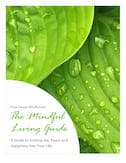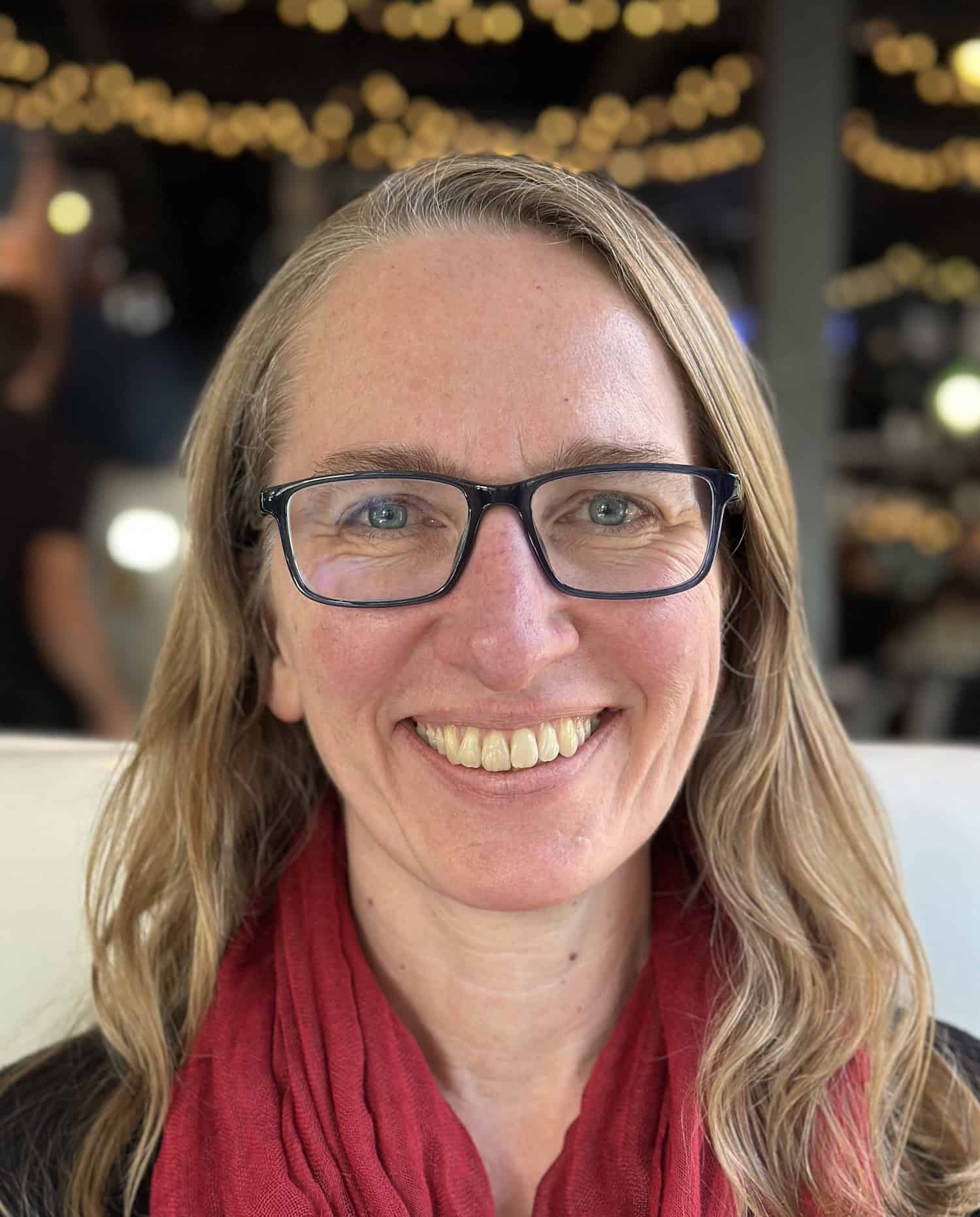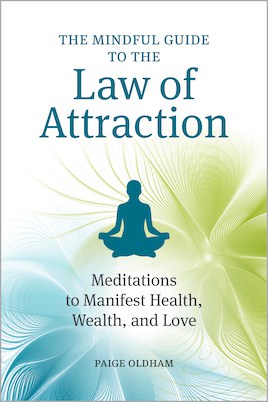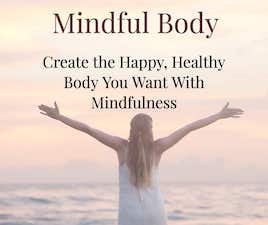We’re told over and over that we’ll never achieve anything if we don’t have goals, preferably written ones. Goals get us from point A to point B. Or do they?
What about the path between A and B? What happens there?
There are so many methods of writing, tracking and managing goals that we can get lost and spend more time massaging and visualizing our goals than actually doing anything about them.
How many goals do you have?
How many goals can you realistically chase at the same time?
Do your goals complement each other or are they at odds with each other?
Managing Goals
I used to keep a detailed matrix of my goals in every area of my life (yes, I’m an anally organized kind of person who loves processes). At the beginning of each month I would review this matrix, visualizing having already achieved each goal, writing down action steps for each one and doing all the other things you’re supposed to do to ensure that you achieve your goals.
Guess what. I got almost nowhere with any of them.
And because of that, I consistently beat myself up for not being able to achieve any of them which made me unhappy.
Of course, the unhappiness pushed me further away from achieving any of my goals.
After a while I finally gave up the practice of reviewing my goals because I thought it was a waste of time.
I tried many other ways of managing my goals, all with the same dismal result.
A New Paradigm
Then I started reading about people like Leo Babauta at Zen Habits who have gone beyond simplifying goals. They have basically given up on all the “rules” of goals and just do what makes them happy.
This doesn’t mean that you float around aimlessly. It means finding and doing what you love, what you’re passionate about.
You live your life the way a person who had already achieved the goal lives.
Because you’re doing what you love, you’ll naturally accomplish more and have fun in the process.
Goals and Happiness
If you think along the lines of “I’ll be happy when I achieve Goal B” then you’ll never be happy. That line of thinking implies that you’re currently not happy and the process of getting you to Goal B isn’t going to make you happy either. So what makes you think you’ll be happy when you get there?
And Goal B is only a point in time. Even in the very unlikely event that you achieve Goal B, the happiness that you may feel is fleeting. Once the goal is achieved, then what? Back to the drudgery and “I’ll be happy when I achieve Goal C?”
Nothing outside of you is going to make you truly happy in a lasting way.
Being happy is a choice. It’s actually a series of choices that we make all day every day.
By accepting people and things that we can’t control as they are and by taking personal responsibility to change the things we can, we choose to be happy moment by moment.
Being present in the moment and realizing that this moment is all we really have greatly reduces the drive to be, do and have something different in the future.
If we can’t be happy in and with the present moment, we can’t be happy.
If goals can’t make us happy, how do we move forward? With “non-goals.”
So How Do I Do This?
How do you turn goals into “non-goals?”
Instead of always looking into the future at what you don’t have (your goal), focus on today and what you do have. And be grateful for it.
Turn futuristic goals into ways of living and being on a daily basis.
Here are a couple of examples.
Financial Non-Goals
For example, if your goal was to get out of debt, you might have come up with a budget (that you could never follow), set up some sort of complicated payment plan (that’s a pain to maintain), checked your over-spending at the end of each month (and beat yourself up), checked your debt balances on a regular basis (and beat yourself up) and wonder why you can’t seem to get out of debt.
This process keeps you focused on the problem. And what you focus on grows.
This process also keeps you in a state of unhappiness. It’s hard to achieve great things when you’re unhappily beating yourself up all the time.
Here’s what the non-goal of getting out of debt would look like:
First of all, ask yourself how a person with no debt lives.
Cut up your credit cards. Set up an automated payment plan with your bank’s bill pay service and forget about it. Pay for as many things as possible with cash – bills and coins – which makes you think twice about what you’re buying. You can’t overspend. Be grateful for the money you have to pay for those things.
Start being mindful about why you’re buying what you’re buying with every dollar that goes out. How do those expenditures of your life energy make you feel? Are you compensating for some other inadequacy in your life? Are the expenditures investments in your happiness? How will you feel about them in a day, a week or a year?
This process keeps you in the present moment. It keeps you focused on how you want to feel (happy) instead of being focused on the problem.
And it’s a way of being and living. There’s no end point or goal to it.
Weight Loss and Health Non-Goals
Another example would be losing weight. Say you wanted to lose 10 pounds. You decided to go on a diet and start an exercise program to get there. One day you started eating every meal in accordance with the diet’s plan which is nothing like what you normally eat. Maybe you got hungry but you wouldn’t eat because the diet told you that you couldn’t. And you kept a food diary so you could count every calorie and gram of fat you put in your mouth.
And you started exercising more than you have in months or years which caused you to be tired and sore. You got on the scale every day or two to check your progress only to be let down when you didn’t lose as much as you wanted.
Maybe, just maybe, at the end of the diet and exercise program you actually lost the 10 pounds. Because the diet and exercise program didn’t agree with your lifestyle or wasn’t sustainable, you stopped and went back to your former ways. And the 10 pounds came back. And you beat yourself up for not being able to keep the weight off.
Again, you’re beating yourself up for not achieving arbitrary goals, you’re unhappy with the process and you’re focused on the problem.
Here’s the non-goal way to lose weight:
Start by asking yourself why you want to lose the weight. If the answer is to fit into an outfit for a certain occasion or to look good for someone else, you’ll never lose the weight and keep it off. Your why has to come from something deep inside you. Why’s like: I want to be healthier so I can play with my kids without getting winded; or so I have the energy to do great, fun things all day – will get you there.
Ask yourself how a person who weighs 10 pounds less would live.
Once you have a strong enough why that’s based on something inside you and you have a vision of how your future self eats and exercises, notice your food and beverage choices throughout your day. Before you put anything in your mouth, ask yourself how you will feel in an hour or that evening or the next day if you eat or drink that thing. Don’t rationalize. Be honest with yourself. See yourself in the future and ask your future self what the best choice would be. Make that choice. Be grateful for having the choice. Be grateful for the food and beverages that you do consume.
Instead of jumping into an exercise program that you can’t sustain (and hate), think of something fun you would love to do that involves some kind of physical movement. If you’re not a gym kind of person, don’t subject yourself to that environment. How about a daily walk alone, with your significant other, with friends or a dog (borrow someone’s if you don’t have one)? Dance classes. Playing with your kids. Yoga or pilates in a studio or at home. Find something that resonates with you and your lifestyle. It doesn’t have to be something that’s usually labeled as “exercise.” Just find something that you think is fun and gets you to move and gradually build it into your daily routine. Start small – maybe 10 minutes – and build up from there.
With the non-goal program you’re doing things because you know they’re good for you and they’ll allow you to live the way you want to live and do the things you want to do on a daily basis. You’re happy about doing them. They’re in alignment with your values.
Again, this process keeps you in the present moment. It keeps you focused on how you want to feel (happy) instead of being focused on the problem.
Simple Steps
Look at your current list of goals and pick the one that is most important to you.
Think of ways to turn that goal into a non-goal.
How would a person who had already achieved that goal go through their day? How can you change your daily habits to support the goal so it’s no longer something to strive for in the future? How can you make it part of your daily being and doing?
Pick one and only one new habit that you can start today and do it. Start very small. Do something, anything, that will support your new choices.
Then make sure you do it again tomorrow and the next day.
After a month, reward yourself for sticking with the first new habit and pick a new habit to implement. Again, start very small.
By making these simple, mindful new choices each day you will not only achieve your goals but far surpass them. And you’ll be happy in the process.
Create the life you want: Combine the law of attraction with mindfulness
The law of attraction suggests that our positive or negative thoughts bring about positive or negative experiences. My latest book, The Mindful Guide to Law of Attraction, pairs that belief with the powerful practices of mindfulness. Through intentional breathing, writing, and engaging, you’ll hone a method for manifesting health, wealth, and love―the elements of happiness.
Let the law of attraction work for you by adopting its basic steps of identifying and visualizing the things you desire. Then use 45 practical meditation techniques included in the book to achieve awareness. By concentrating your positive energy on obtaining your wants, you’ll give yourself permission to receive them.
To your happiness! ~Paige

You can find this book at Amazon, Barnes & Noble, Books-A-Million, and Indigo.






 The Mindful Living Guide
The Mindful Living Guide




thank you so much for this astonishing site me and my class preferent this content and perceptiveness
Well everybody have their own ways of doing things, if we set things right, we might not hustle much to get a goal achieved
My view on goals is this: If we have to SET it, it’s not a real goal. It’s not authentic. I have goals, but I didn’t sit down and have to work them out, I just listened to my Inner GPS…
That being said I really like your reframe, turning goals into non goals. It’s like instead of trying to become happy, asking ourselves what wwe’d do if we were already happy.
In the end, just about everything we do is in the quest to be happy. Do we really need to accomplish all those goals if we decided to be happy first? I agree with you AJ. Thank you!
This is very inspiring.
I have been working on my happiness project, although I am not unhappy so the title may be a bit misleading, but I know I can build things into my life to reach goals I would like to achieve. Managing finances better, increasing my energy, taking my son to Disneyworld.
I also have an issue with striving. When I start something new I hit the ground running and obviously I cant keep this up and I sicken myself. I have done this with many things, starting a business, starting new projects, new jobs.
Doing my resolutions this year has brought my striving to mind and I have had to think about how to cultivate non-striving, or as you brilliantly put it how to achieve your goals without chasing them. I decided to slow down and pay attention to my day, if I pay attention to what I eat, I will eat better, if I pay attention to how long I have been sitting in front of the tv I will take the dog out, if I pay attention to what I am spending money on and if I need it, I wont spend it.
I realised thats its the periods of mindlessnes that lead to eventual striving. Mindless eating, mindless spending, mindless sitting leads to realisation, panic, striving.
Your article has reminded me of this again. Thank you. As I do need to be reminded every day. Pay attention, be aware and it will happen without chasing it.
Thank you Anne Marie! You’ve got it exactly! Our lives are a series of moments, whether we choose to be mindful of them or not. Sprints and striving aren’t sustainable and, are you’re aware, aren’t very fun. Making moment-to-moment choices that support our goals and values are. It’s a much more relaxed way of being.
Hi Tess,
It is true. All we ever have to deal with at any point in our life is this moment. All we ever have to go through is each day. When we add the burden of past and future it make is challenging to enjoy the present.
It is so freeing to let go of the deadlines and the pressure of just thinking about the future. Once we know what we value and what we want to get out of life it becomes easier to focus on the present. It become easier to take the right actions that will bring us closer to our desired destination.
Congrats on losing the weight and your daughter’s weddding. One day at a time, one moment at a time works!
Wishing you many blessings.
Peace, Love & Gratitude,
Neseret
Thanks Tess! And congrats on losing the weight and your daughter’s wedding!
Yes, all we have is the present moment in which to make decisions and those decisions, however small, create our future.
It sounds like you’re creating a great future for yourself!
Namaste
Hi Paige,
Start being mindful about why you’re buying what you’re buying with every dollar that goes out. This is easy to do “just for today.”
Lately I lost 7 lbs in order to fit in a dress I already owned for my daughters wedding. I put on the weight while grieving my mom who passed away last year. Seriously I was in complete denial about doing it.
I did lose the weight for the wedding and one day at a time, one meal and one snack at a time will keep it off all while being aware in the present moment.
Hi Paige,
I’m so glad to be reading this post today. It was a timely validation of some things I’ve realized recently. I know I have everything I need within me to be happy today – right NOW.
I spent a lot of time in my younger years reading self help books. I use to proudly call myself a self help junkie. In most of the books I read there was a lot of emphasis on setting goals and achieving them and all that entails. Achieving dreams and goals at times felt like a very painful process.
It is so refreshing and almost a relief to hear the idea of turning “goals in to non-goals”. After all the disappointments and the pressure I put on myself for years I naturally just started to let go. This is the first time I’ve read about this idea. It confirms something I am experiencing in my life.
Just focus on what makes me happy, live in the present and be thankful for all that I have. It is so simple and straightforward. Alas! That is too simple! We humans love to complicate things. Don’t we?
Thank you so much for sharing this beautiful post. Wishing you many blessings.
Peace, Love & Gratitude,
Neseret
Neseret,
I’m so glad this was helpful! I, too, spent many years as a self help junkie trying every way possible to manage the process of achieving my goals – only to get thoroughly frustrated with the whole process. I only wish I had found the non-goal concept sooner.
Namaste